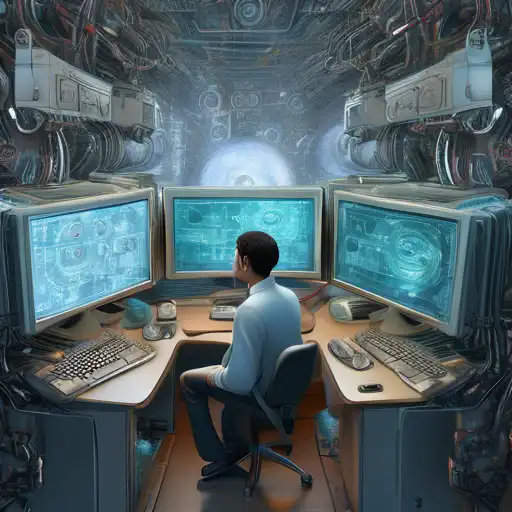Introduction to Computer Vision
Computer vision is a field of artificial intelligence that trains computers to interpret and understand the visual world. By leveraging digital images from cameras and videos and deep learning models, machines can accurately identify and classify objects—and then react to what they "see."
The Science Behind Computer Vision
At its core, computer vision involves the automatic extraction, analysis, and understanding of useful information from a single image or a sequence of images. It involves the development of a theoretical and algorithmic basis to achieve automatic visual understanding.
Key Technologies in Computer Vision
- Image Classification: Assigning a label to an entire image.
- Object Detection: Identifying objects within an image and drawing a bounding box around them.
- Segmentation: Partitioning an image into multiple segments to simplify the representation of an image.
- Feature Matching: Identifying features in images and matching them to features in other images.
Applications of Computer Vision
Computer vision has a wide range of applications across various industries. Here are a few examples:
- Healthcare: From detecting tumors in radiology scans to monitoring patient movements for physical therapy.
- Automotive: Enabling self-driving cars to understand their surroundings.
- Retail: Enhancing customer experiences through cashier-less stores and personalized shopping.
- Security: Facial recognition technologies for surveillance and authentication purposes.
Challenges in Computer Vision
Despite its advancements, computer vision faces several challenges, including but not limited to:
- Variability in lighting conditions can affect image quality.
- Occlusion, where objects are hidden or only partially visible, complicates detection and recognition.
- The need for large datasets to train models, which can be time-consuming and expensive to compile.
The Future of Computer Vision
The future of computer vision is incredibly promising, with ongoing research pushing the boundaries of what machines can see and understand. Innovations in artificial intelligence and machine learning are expected to further enhance the capabilities of computer vision systems, making them more accurate and efficient.
As we continue to explore the potential of computer vision, it's clear that this technology will play a pivotal role in shaping the future of various industries, making our interactions with machines more intuitive and seamless.
